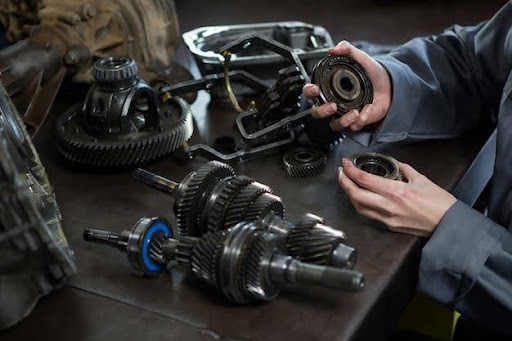
2024 GMC Sierra Denali Ultimate 1500 Crew Cab Short Box in Titanium Rush Metallic with 7-spoke ultra-bright machined wheels; 3/4 driver-side front view in motion next to water.
Maintaining a car can sometimes feel like navigating a complex puzzle, especially when it comes to choosing the right spare parts.
Whether you’re facing a repair or simply want to keep some spare parts handy for regular maintenance, knowing how to select the right components for your vehicle is essential.
This guide aims to demystify the process and ensure you make informed decisions that keep your car running smoothly without breaking the bank.
Read on.
Understand Your Vehicle’s Requirements
The first step in choosing the right spare parts is understanding your vehicle’s specific needs. Each car is unique in terms of its model, make, year of manufacture, and engine type. This information is crucial because it determines which parts are compatible with your car.
Always refer to your vehicle’s owner’s manual, which contains detailed information about the specifications of various components that are suited for your car.
OEM vs. Aftermarket vs. Used Parts
When shopping for car parts, you’ll encounter mainly three types: OEM (Original Equipment Manufacturer), aftermarket, and used parts.
Here’s a quick breakdown:
- OEM Parts are made by the vehicle’s original manufacturer. They guarantee a perfect fit and are typically more reliable because they are exactly the same as the parts you’re replacing. However, this assurance comes at a higher price point.
- Aftermarket Parts are manufactured by companies other than the original manufacturer. They are usually less expensive and offer a wider variety of options. However, the quality can vary significantly. When choosing aftermarket parts, it’s crucial to select reputable brands or those recommended by a trusted mechanic.
- Used Parts can be a great budget-friendly option, especially for older vehicles where new OEM parts may no longer be available. When buying used, it’s important to inspect the part thoroughly for any signs of wear or damage and to buy from reputable sellers or salvage yards.
Where to Buy Your Car Parts
Choosing where to buy your car parts can be just as important as selecting the parts themselves.
Here are a few options:
- Authorized Dealers: Authorized dealers, such as Buick & GMC Dealership are typically the most reliable source for OEM parts. Purchasing from authorized dealers offers significant advantages, such as warranties and the assurance of high-quality, genuine parts. These dealers often have direct access to the latest updates and recalls from the manufacturer, providing an additional layer of security and support that can be crucial for maintaining your vehicle’s health and safety.
- Online Retailers: Retailers offer convenience and the ability to quickly compare prices. Websites like Amazon, eBay Motors, or specialized auto parts stores have extensive catalogs. Be sure to check the seller’s ratings and reviews before making a purchase.
- Local Auto Parts Stores: These stores provide the advantage of in-person advice and immediate availability. Staff at these stores can often provide additional insights and help ensure you’re choosing the right part.
Quality and Safety Considerations
Not all car parts are created equal. It’s important to consider both the quality and safety of the parts you choose:
- Check for Certifications: Look for parts that meet industry standards and certifications. These might include ISO (International Organization for Standardization) certifications, which ensure that the parts meet specific quality guidelines.
- Warranty and Return Policies: Always check whether a part comes with a warranty. A warranty can serve as a reliability indicator and protect you in case the part fails prematurely.
Installation: DIY or Professional?
Decide if you will install the part yourself or need professional help. While many car enthusiasts are capable of handling basic repairs and replacements, some parts may require specialized tools and knowledge.
Consider the complexity of the installation and your own skill level. If in doubt, it’s wise to opt for professional installation to avoid any potential damage to your vehicle.
The Cost-Quality Balance
While it might be tempting to go for the cheapest available option, this can often lead to more expenses down the line due to poor performance or shorter lifespans of low-quality parts.
Invest in parts that offer a balance between cost and quality, keeping in mind that a slightly higher upfront cost can result in longer durability and better performance of your car.
To Wrap It All Up
Choosing the right spare parts for your car doesn’t have to be a daunting task. By understanding your vehicle’s needs, weighing the pros and cons of different types of parts, and considering where to buy them, you can make decisions that enhance your vehicle’s performance and longevity.
Remember, investing in quality parts is not just about maintaining your vehicle but also about ensuring your safety and that of others on the road.













More Stories
Bridging Tech and Transport: The Power of Mobility Engineering
The Importance Of Quality Suppliers For Your Automotive Business
Enhancing Your Pickup Truck’s Exterior: Tips for Lasting Customization